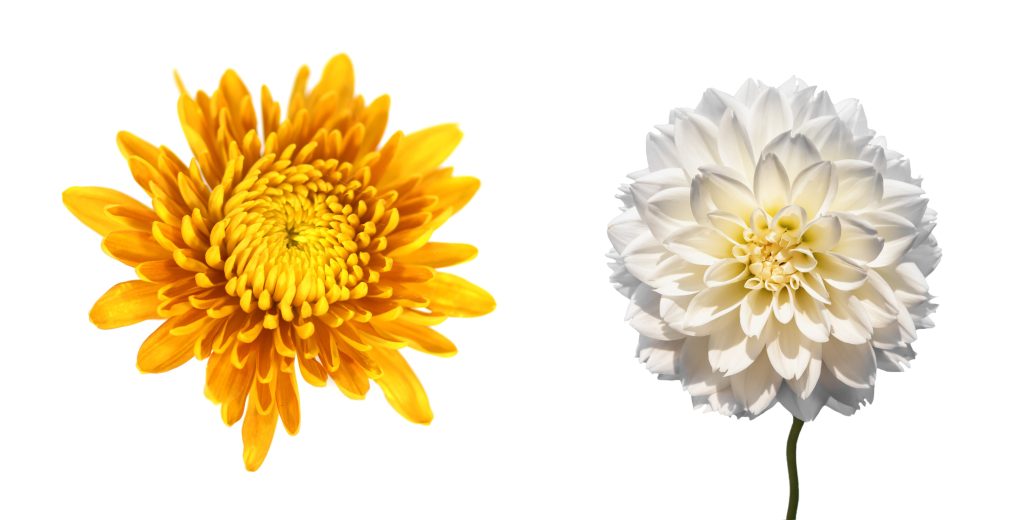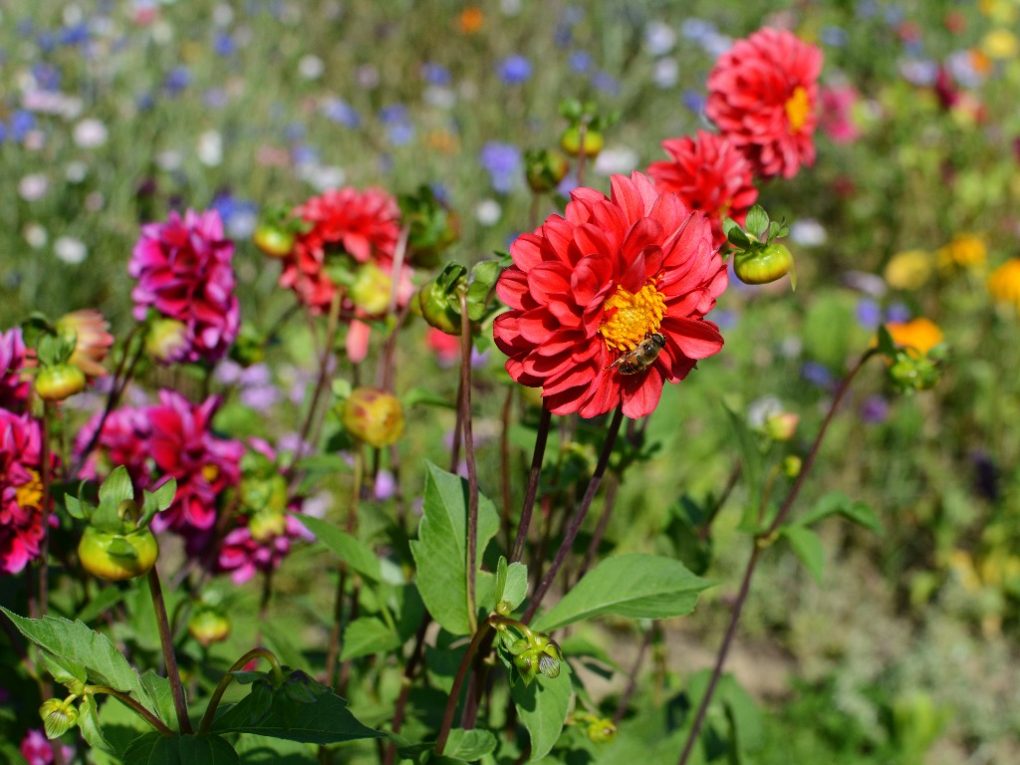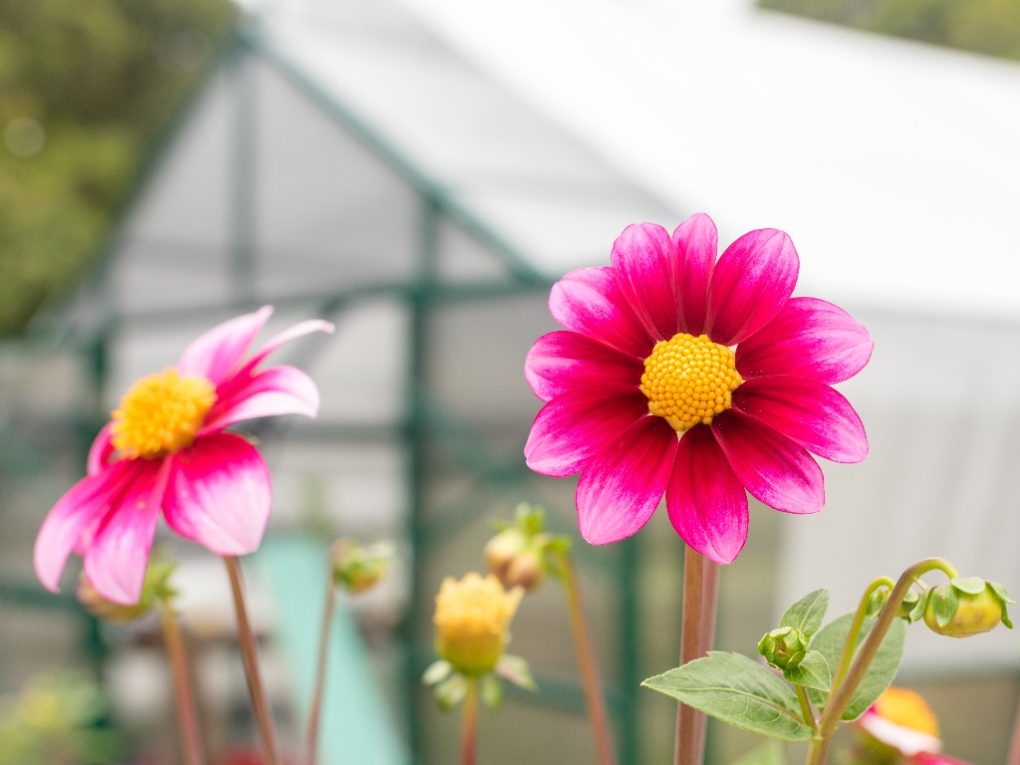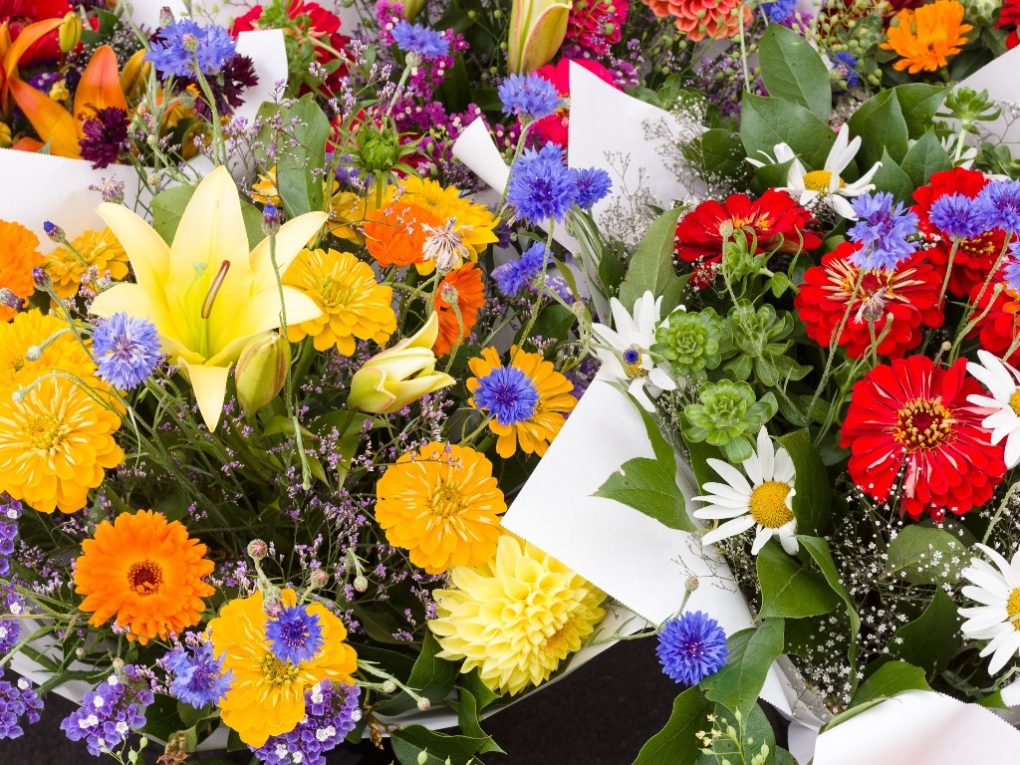Chrysanthemum vs. Dahlia: A Comparison of Two Popular Garden Flowers
One of the most significant differences between chrysanthemums and dahlias is their origin. Chrysanthemums are native to China and have been used in medicine and art for thousands of years. On the other hand, dahlias are native to Mexico and were introduced to Europe in the 19th century.

Another difference between the two flowers is their leaves. Chrysanthemums have delicate, lacy-looking leaves with many rounded lobes, while dahlia leaves are ovate with pointed tips and slightly serrated edges. Additionally, chrysanthemum leaves are an almost dusty-looking, blue-green color and have a texture to their leaves, while dahlias have glossier leaves.
Table of Contents
A Comparison of Chrysanthemums and Dahlias
Appearance
Dahlia and chrysanthemum are both members of the Asteraceae family, but they differ in many aspects. Chrysanthemums typically have many small, daisy-like flowers that form a rounded shape and come in various colors: white, yellow, pink, red, and purple.
On the other hand, Dahlias have larger, more complex flowers ranging from a few inches to over a foot in diameter. They come in various shapes and colors, including white, yellow, orange, pink, red, and purple.

The leaves of dahlias are generally elongated and pointed, with serrated or toothed edges. They can vary in size, with some species having smaller leaves while others have large leaves that can be up to 10 cm long. Chrysanthemum leaves are typically broader and more rounded, with serrated edges, and can also vary in size but are generally 5 to 10 cm long.
Dahlia leaves are usually dark green and have a slightly glossy, smooth texture. Depending on the variety, they may also have a slight fuzziness. Chrysanthemum leaves are also typically dark green but have a slightly rougher texture and can sometimes have a waxy coating on the surface.
The leaves of both dahlias and chrysanthemums are arranged alternately along the stem. However, dahlias often have a more open and spreading growth habit, with leaves spaced farther apart along the stem. In contrast, chrysanthemums have a more compact growth habit, with leaves clustered closely along the stem.
The veins on dahlia leaves are typically more visible and pronounced than those on chrysanthemum leaves. Dahlia leaves have a central vein that runs down the middle of the leaf and multiple smaller veins branching off from it. Chrysanthemum leaves have a similar vein structure, but the veins are usually less prominent.
Care
Both dahlias and chrysanthemums prefer well-draining soil with good fertility. They require soil with a pH between 6..5 to 7.0. Both plants require regular watering, but dahlias have a higher water requirement than chrysanthemums.

Dahlias need consistent moisture to thrive, especially during hot and dry periods, and should be watered deeply, or an inch deep, once a week. Chrysanthemums prefer soil that is evenly moist but can tolerate slightly drier conditions and should be watered when the top inch of soil feels dry.
Both plants benefit from regular fertilization, but dahlias have a higher nutrient requirement than chrysanthemums. Therefore, dahlias should be fertilized with a balanced fertilizer once every 3-4 weeks during the growing season, while chrysanthemums should be fertilized with a slow-release fertilizer during the vegetative phase.
Dahlias and chrysanthemum plants require full sun to grow and bloom, but dahlias can tolerate partial shade, especially in hot climates. Chrysanthemums require at least 6 hours of sunlight daily to bloom properly.
Both plants benefit from regular pruning, but the timing and method differ slightly. For example, Dahlias should be pinched back to about six inches to encourage bushier growth and should have spent blooms and stems removed throughout the growing season.
Chrysanthemums should be pinched back to about eight inches tall and have faded blooms removed to promote continued blooming. Also, dahlias are generally not hardy in cold climates and should be dug up and stored indoors during the winter. Chrysanthemums are hardier and can usually survive the winter with some protection, such as a layer of mulch or a frost cover.
Uses
I usually use chrysanthemums and dahlias as decorative plants in my garden. You can also commonly find them as ornaments in parks and public spaces. They are also used as cut flowers in floral arrangements, bouquets, and wreaths. Both flowers come in various colors, shapes, and sizes, making them versatile and popular choices for decoration.
Dahlias are sometimes grown for exhibition purposes, where they are judged for their size, form, color, and other qualities. The nectar-rich flowers of dahlias also attract pollinators like bees, butterflies, and hummingbirds to the garden.

Traditional Chinese medicine has used chrysanthemums for centuries to treat various ailments, including headaches, fever, and hypertension. The flowers are rich in antioxidants and have anti-inflammatory properties, and Dahlias have not been traditionally used for medicinal purposes.
Chrysanthemums contain pyrethrins, which are natural insecticides that repel insects. Pyrethrins are commonly used in insecticides and pet shampoos to kill fleas and ticks but do not have insect-repelling properties.
Also, chrysanthemum leaves and petals are used in some Asian cuisines, particularly in China and Japan. The leaves are used in soups and stews, while the petals are used in salads and garnish. Dahlia flowers are not commonly used as food.
Chrysanthemums and dahlias can further be used to create natural dyes for fabrics. The flowers are boiled in water to extract the pigment, which can then be used to dye fabrics. Chrysanthemums are particularly useful for creating yellow and green dyes, while dahlias can produce red, pink, and purple dyes.
Why Plant Chrysanthemums and Dahlias
Both chrysanthemums and dahlias are prized for their beautiful and showy flowers, which come in a wide range of colors, sizes, and shapes. They can add visual interest and color to any garden or landscape.
Chrysanthemums and dahlias have a long blooming season, often beginning mid to late summer and continuing into fall. This makes them ideal for adding color to a garden or landscape when many other plants have finished blooming.
Both chrysanthemums and dahlias are relatively easy to grow and require minimal maintenance once established. They adapt to various growing conditions and thrive in full sun or partial shade.
Chrysanthemums and dahlias are versatile plants that can be used in various ways. They are commonly used in garden borders, containers, and as cut flowers for floral arrangements. As mentioned, some varieties of chrysanthemums can also be used in cooking or traditional medicine.
